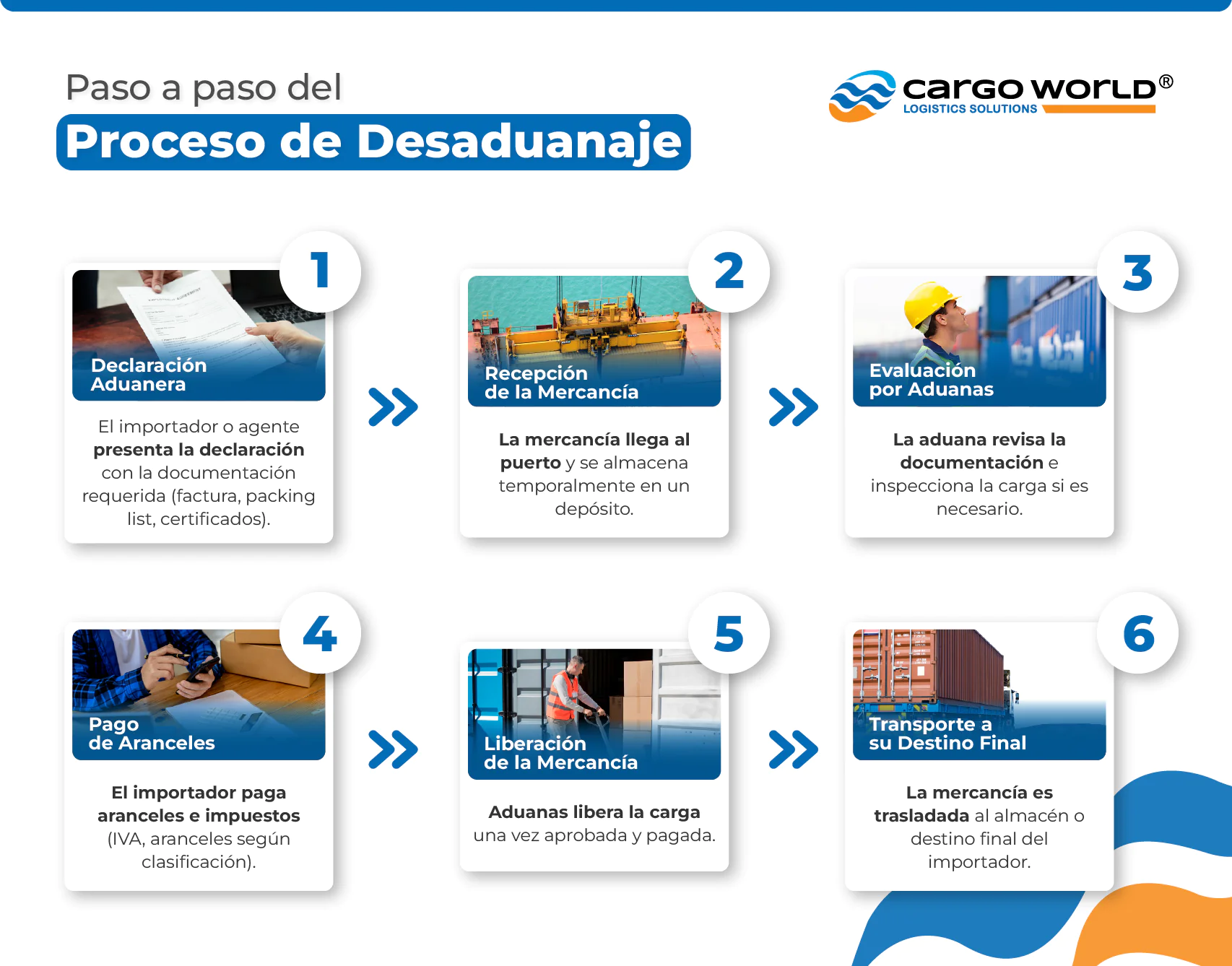COMPLETE GUIDE TO CUSTOMS CLEARANCE: HOW TO SUCCESSFULLY RELEASE YOUR GOODS
Customs clearance is a key process in international trade as it allows the entry or exit of goods across borders, ensuring compliance with each country’s customs regulations. If you’re new to logistics or simply want a clearer understanding of the process, this guide will walk you through everything you need to know to successfully clear your products.
What is Customs Clearance?
Customs clearance is the process through which goods are authorized for entry or exit from a country after the inspection and verification of the corresponding documentation. This procedure is essential to comply with local and international laws regulating foreign trade, preventing smuggling, tax evasion, and ensuring that goods meet sanitary, safety, and technical requirements.
Who is Involved in the Process?
Several entities are involved in customs clearance, including:
- The importer or exporter: The person or company conducting the commercial operation.
- The customs broker: A professional responsible for managing the paperwork with customs on behalf of the importer/exporter.
- The customs authority: Responsible for overseeing compliance with regulations.
Step-by-Step Customs Clearance Process
- Submission of Documentation The first step in the process is to submit the necessary documentation for customs authorities to verify the goods and authorize their entry or exit. The usual documentation includes:
- Commercial invoice
- Packing list
- Bill of lading
- Certificates of origin and quality, if applicable
- Sanitary or phytosanitary documents in case of perishable or hazardous products
- Tariff Classification Each product must be properly classified under the corresponding tariff code. This code defines the taxes or tariffs to be paid for the import/export of the goods. An error in classification can cause delays or fines.
- Customs Value Determination The value of the goods is another crucial factor, as taxes and tariffs are calculated based on this value. This value may include transportation costs, insurance, and other related expenses. A sworn declaration of value is presented, where the importer or exporter assures the information is accurate.
- Payment of Taxes and Tariffs After classification and valuation, taxes such as VAT, import duties, or any special fees are calculated. Payment must be made before the goods can be released.
- Physical and Documentary Inspection In some cases, customs may request a physical inspection of the goods to verify that they match the declared documentation. This step may vary depending on the type of product and the regulations of the destination country.
- Release of Goods Once all the previous steps are completed, and after the customs authority gives its approval, the goods are released. This allows the products to be removed from customs for distribution or storage as planned.
Common Customs Clearance Mistakes
The customs clearance process can become complicated if not handled correctly. Some of the most common mistakes include:
- Incomplete or incorrect documentation: Make sure to review all documents before submitting them to customs.
- Incorrect tariff classification: This error can lead to sanctions or a higher tariff rate.
- Declaring an incorrect value for the goods: Failing to be transparent with the true value can result in penalties and delays.
Why is Efficient Customs Clearance Important?
A smooth and error-free customs clearance process is crucial to avoid delays in the delivery of goods, additional storage costs at customs, or unexpected fines. Moreover, efficient management improves the supply chain, giving you a competitive edge in the global market.
Tips for Successful Customs Clearance
- Work with an experienced customs broker: A professional with knowledge of local and international customs regulations can save you many headaches.
- Keep your documents organized: A digital filing system can make it easy to quickly access all required documentation.
- Prepare for inspections: Having all documentation in order reduces the chances of physical inspections or delays.
